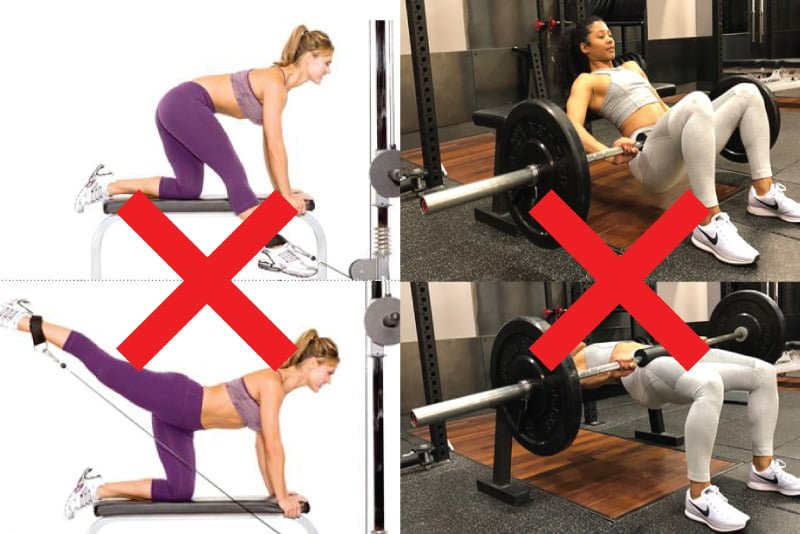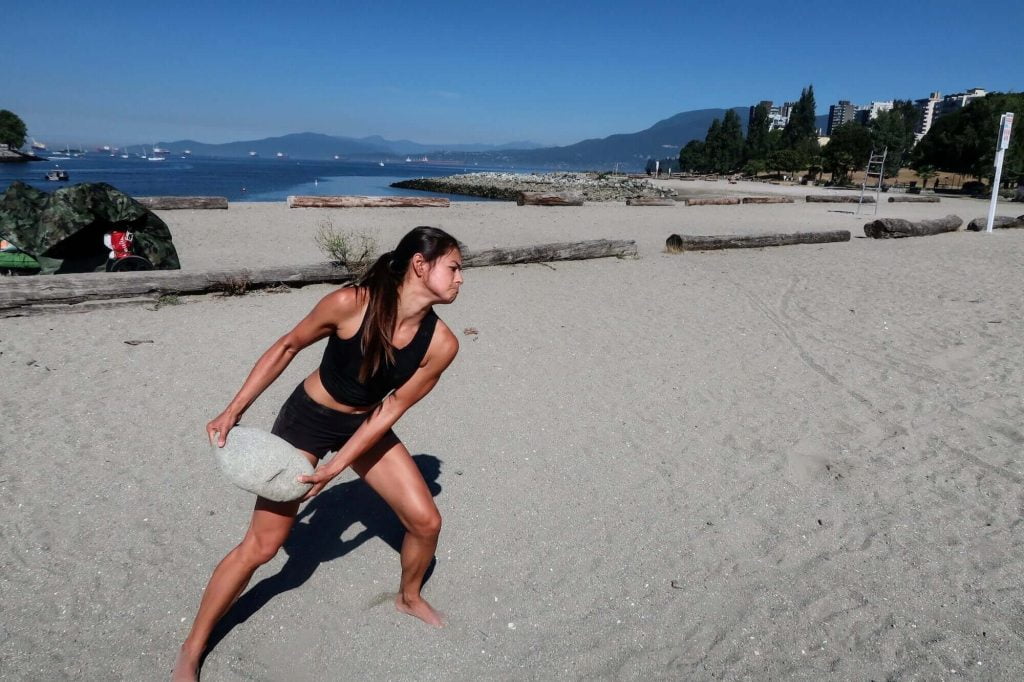Ironically, sprint training has fallen behind the pack as a form of fitness training.
Think about it:
- You hit the weights for strength.
- You go cycling, jogging, or to some HIIT class for cardio
- You do yoga for mobility and balance.
Sprinting doesn’t fit in.
And that’s a pity. Because, as I hope to convince you in this post, sprint training deserves a spot in your fitness routine’s rotation. It’s one of the most efficient ways to get stronger, stay nimble, burn calories, and build your cardiovascular system.
Your age is no excuse, either. If these people can keep sprinting into their second century, you can sprint, too:
In This Sprint Training Guide
Sprint Training FAQ
Can sprinting help you lose fat?
Definitely.
In terms of calorie burning, sprinting is more effective than slow and steady training, like jogging and cycling. (Here’s an extensive summary on the relative benefits of sprint interval training if you have the urge to nerd out.)
It’s a 2-for-1 deal:
- It helps you gain muscle, which steals calories from fat.
- It gets your metabolism humming, and continuing to hum long after your sprint workout’s complete.
But, as you probably know already, the most important way to lose fat is to run away, and stay away, from bad eating habits. Sprinting just gets you there faster.

Which muscles does sprint training work?
Sprinting hits your core and shoulder muscles in addition to pretty much all of your lower body.
But unless you’re rehabbing an acute injury or training for a bodybuilding competition, you might want to focus less on the specific muscles you’re training and more on developing well-rounded fitness by doing natural, compound exercises—like sprints.
That said…
Sprints are especially great for your behind. Have you seen sprinters’ thrusters? Yowzas. So if a firm bubble butt’s what you’re after, try replacing your cable glute kickbacks and barbell hip thrusters with sprints.
What are other benefits of sprinting?
Sprinting, like any form of extreme exertion, is hormetic. When done in small doses, it makes your mind and body more resilient. This benefits you in many ways, including:
- Improved cognition
- Lower insulin sensitivity
- Higher endurance and work capacity
- Better heart health
- Increased mental toughness
For references on these benefits and more, check out the Poliquin Group’s post, Eight Reasons Everyone Should Do Sprints.
Isn’t sprinting an injury risk?
Yes, especially if you do it too much on cold, hard cement with cold and hard muscles.
So you’d be wise to gradually work your way up to top speeds, do it on grass, sand, or a soft track, and complement your sprint training with a daily mobility routine.
But injury risk shouldn’t be an excuse not to do sprint workouts. As mentioned in the previous question, sprint training is hormetic, so when done safely it will make you more resistant to injury by:
- Increasing your bone density
- Strengthening your muscles
- Extending your active range-of-motion
How should you safely get into sprint training?
This article from Breaking Muscle has the most practical guide I’ve found online for getting into sprint training. In summary, here’s what the author recommends:
- Find a hill to start with. Uphill sprinting puts less pressure on your over-rested, under-used limbs, promotes better mechanics, and prevents injury from over-striding.
- Gradual warm-up:
- 2 x 15m high knee run
- 2 x 15m carioca drill
- 2 x 15m butt kicks
- 2 x 15m backward run
- 2 x 20m runs at 50% of top speed
- 2 x 20-30m runs at 65-70%
- 2 x 20-30m sprints at 85-90%
- Sprint 20 to 40 meters, 4-to-6 times. It’s better if the workload seems too light than too heavy. You don’t need to “feel the burn” to get the benefits.
- Plenty of rest between sets. At least three times as long as it took you to do the sprint.
- Combine sprints with other leg strength training exercises. See the next question…

What else can you incorporate into a sprint workout?
A sprint training workout on its own is plenty. And you can mix up different sprint training exercises from the next section to keep it from getting repetitive.
But if you want to do more than race back and forth in different fashions, here are some other exercises to consider incorporating into your workout:
- Supersets. While your legs are recovering, do an upper-body strength training exercise.
- Leg strength exercises. Weighted squats, one-legged squats (shrimp or pistol), step-ups, lunges, deadlifts, etc.
- Plyometrics. Various types of jumps: broad jumps, skater jumps, lunge jumps, etc. Or even throwing heavy objects like rocks.
Check out my comprehensive beginner’s guide to outdoor workouts for many more ideas and inspiration.
How often should you sprint train?
Once a week is good. Twice is great. Three times, max. But then, like anything done too frequently, it can get tedious.
In any case, that’s probably getting ahead of ourselves. Start with adding sprints to your workout once. Then go from there.
What if you still don’t want to sprint, despite all this evidence in its favor?
I don’t blame you.
Nobody does exactly what they know is best for them. Our subconscious minds have no trouble finding excuses to weasel out of anything they don’t feel like doing. Facts don’t change people’s minds.
So if your subconscious decides it doesn’t want to sprint train, no amount of evidence or arguments in its favor will win you over.
But what may change your mind is this:
Who do you want to be?
If you want to be a physically and mentally tough badass Old-lympian like those 100-year-olds from the video above, you might want to sprint train every once in a while. But if you’re satisfied being soft and slow, there’s nothing that’ll win you over.
Sprint Training Exercises
Go from Point A to Point B as fast as you can.
The basic bipedal drag race.
Try doing sprints between 50 and 80 meters. That gives you enough space to reach your top speed but is not so far that you could cover the ground faster by pacing yourself.
Race a friend.
It’s more fun and motivating, like all partner workouts.
Chase a friend.
Even more motivating is having someone breathing down your neck. Stagger you and your race mates’ starting points based on speed then race each other to a fixed endpoint. The slowest runner does the “3… 2… 1… Go!” countdown to give them an extra edge.
Hold back a friend.
Strap some bands around your waist and have a friend resist you.
This takes away the thrill of going at top speed, but adds a serious muscle burn. And I mean serious. Just a few sets of about 10 seconds max effort banded sprints will leave your legs feeling like jelly.

Sprint uphill.
If you don’t have a friend to hold you back with bands, enlist gravity as your resistor: Find the steepest hill in your neighborhood (or sand dune, if you’re lucky) and see how fast you can get up it.
As mentioned in the FAQ above, uphill sprints are good bets to start with because they aren’t as hard on your joints and tendons.
Sprint downhill.
Like anything that’s faster and more perilous than normal, downhill sprinting is a thrill.
Obviously, it’s not a good idea to jump right into downhill sprints if you haven’t sprinted since recess. But it’s worth mixing in if you’re fit. Professional athletes use it as a form of “overspeed” training to get faster.
Just keep in mind that the slope should be slight. For whatever it’s worth, this study says 5.8 degrees is optimal. That’s not much steeper than the max grade a train can handle.

Sprint loaded down with something heavy.
It can be a rock in your arms, a loaded backpack, dumbbells, or your dumb friend who wants a piggyback.
A variation of this is to sprint with the weight for about 40 meters before dropping it and accelerating for a final burst.
Sprint then stop.
Add in deceleration to your acceleration for a different type of load on your muscles.
Sprint back and forth.
Try it between markers that are about 10 to 20 meters apart. You won’t reach max speed but if you give it max effort it’s incredibly taxing.
Sprint in intervals.
For cardiovascular training, sprint your heart out for ten seconds, rest for a minute or two, then repeat anywhere from 10 to 20 cycles.
A short workout like this can be just as beneficial as a long, boring jog if you go all-out. Read The One-Minute Workout, one of my favorite “sledgehammer” books that changed my thinking, for a lot more on the science behind this.
Sprint to track your progress (or decline).
There aren’t many better measures of your overall fitness than your 100-meter dash time. It requires strength, speed, mobility, coordination, and endurance. So consider keeping track of how your personal best progresses with age.
As you leave your early thirties and start to slow down, I find it helps to frame it as if you’re training for the Centenarian Olympics. As the table below shows, the world record for a 100-year-old is 26.99. I hope to smash it in 2085.
100-Meter Dash World Record by Age
| Age | Record |
|---|---|
| 40 | 9.93 |
| 50 | 10.88 |
| 60 | 11.70 |
| 70 | 12.77 |
| 80 | 14.35 |
| 90 | 17.53 |
| 100 | 26.99 |
Ready? Set? Go!
There’s a certain thrill to going as fast as you can. And it’s great for your mental and physical well-being. So rather than continuing with whatever boring fitness routine you’ve gotten complacent with, try spicing things up a bit with some sprints.
I hope something in this post has warmed up enough to get you ready and raring to go.
About the author
👋 I'm Chris. Everything you read on TheZag.com is my fault. This site is like a gym for your comfort zone, full of challenges to make your status quo sexier. Join my 'Consider This' newsletter for a fun new challenge every 10 days. Try it!





Leave a Comment